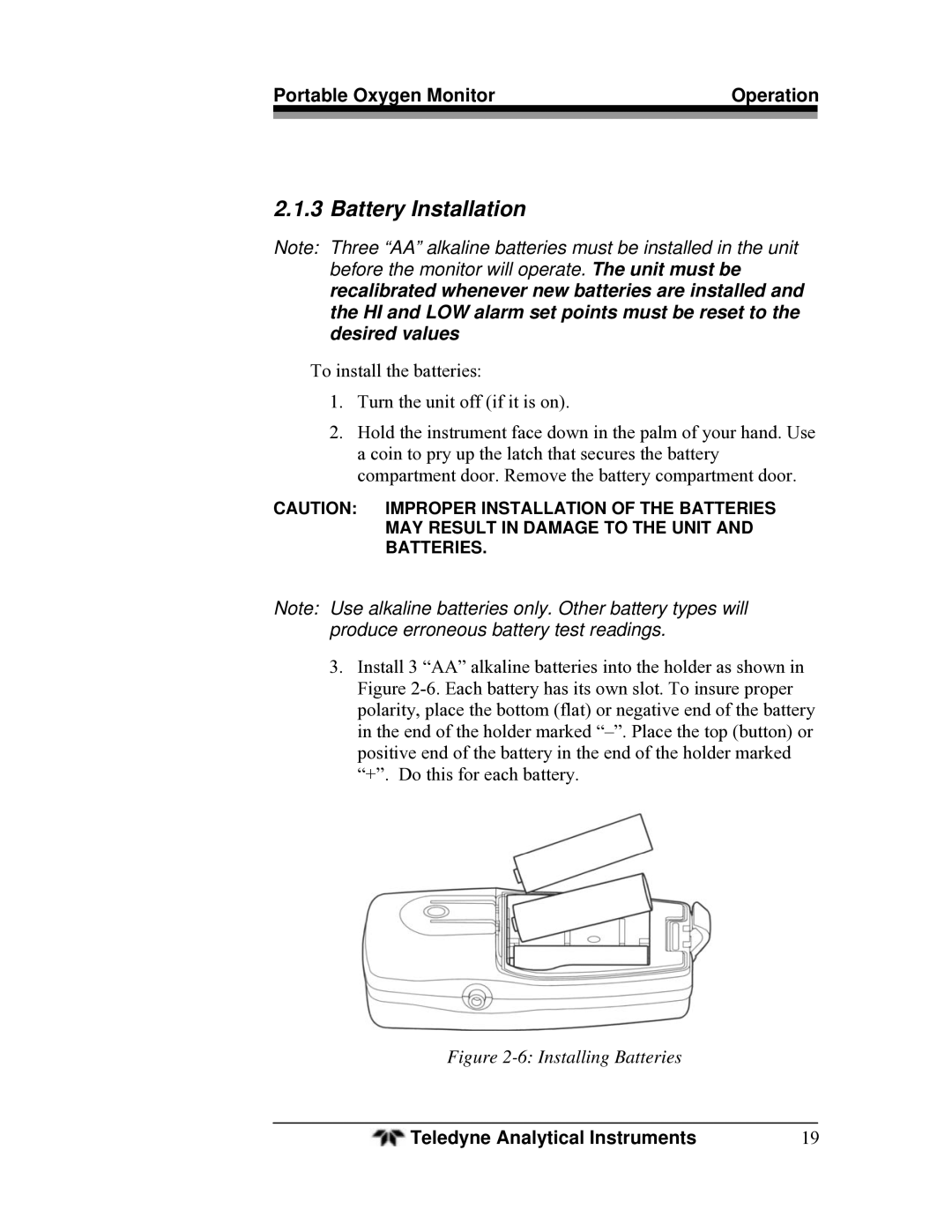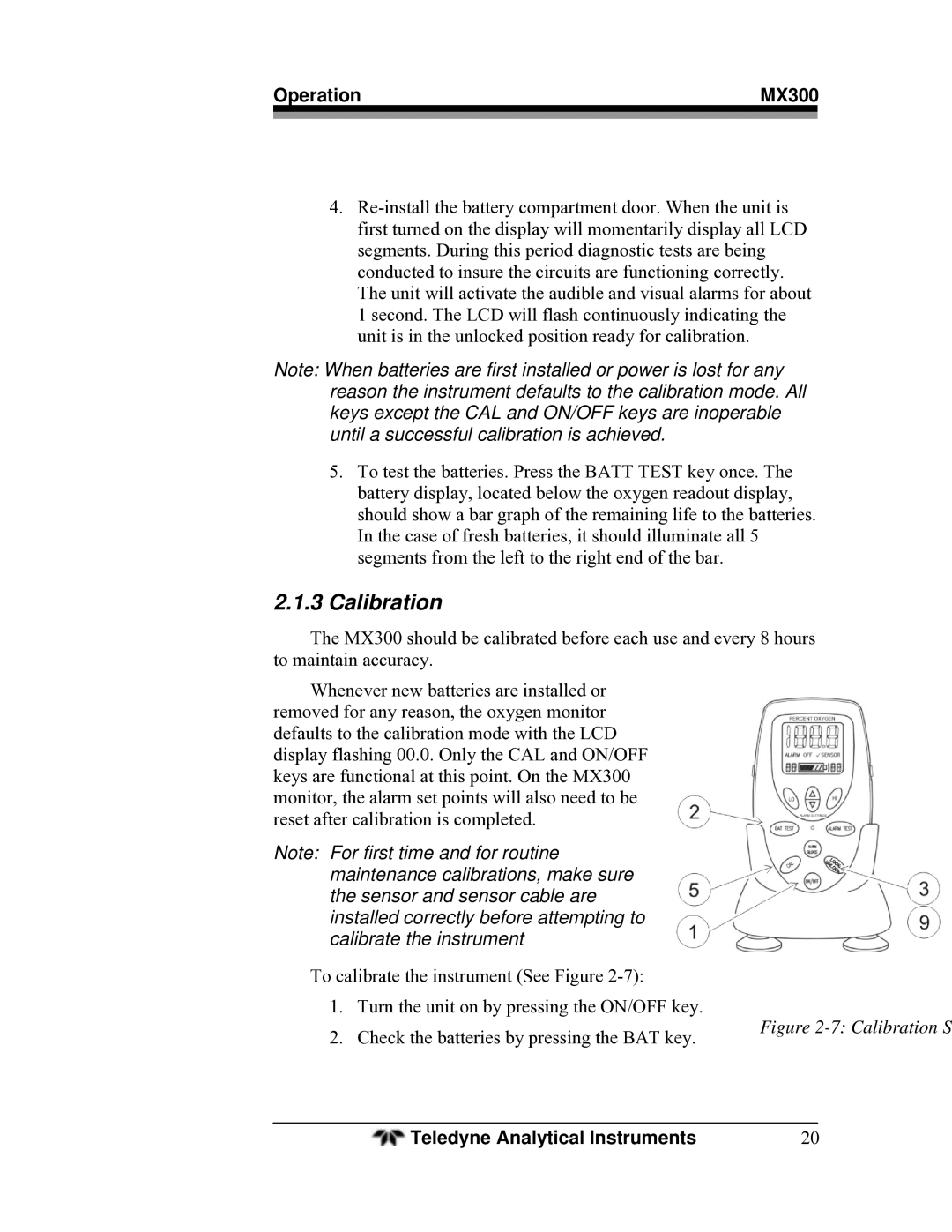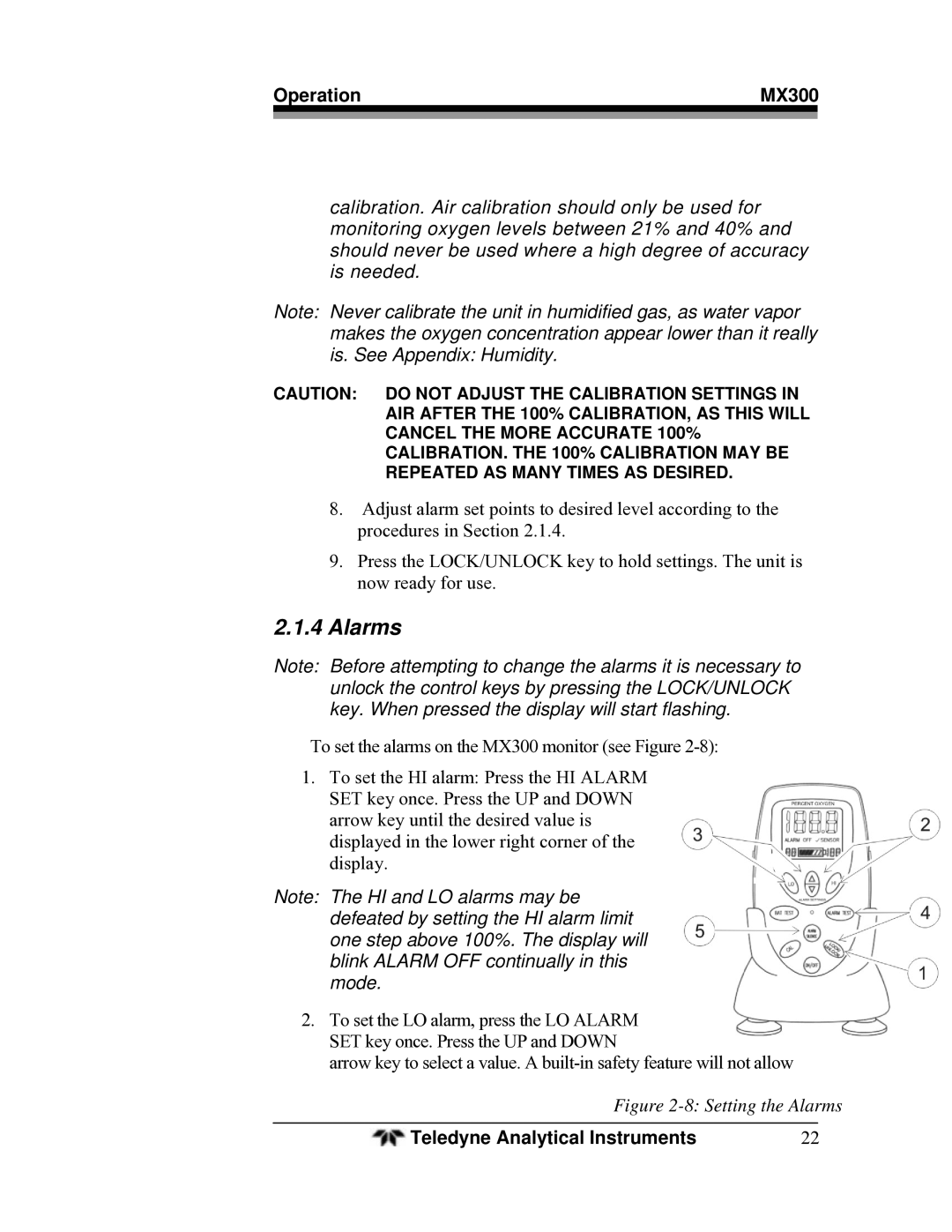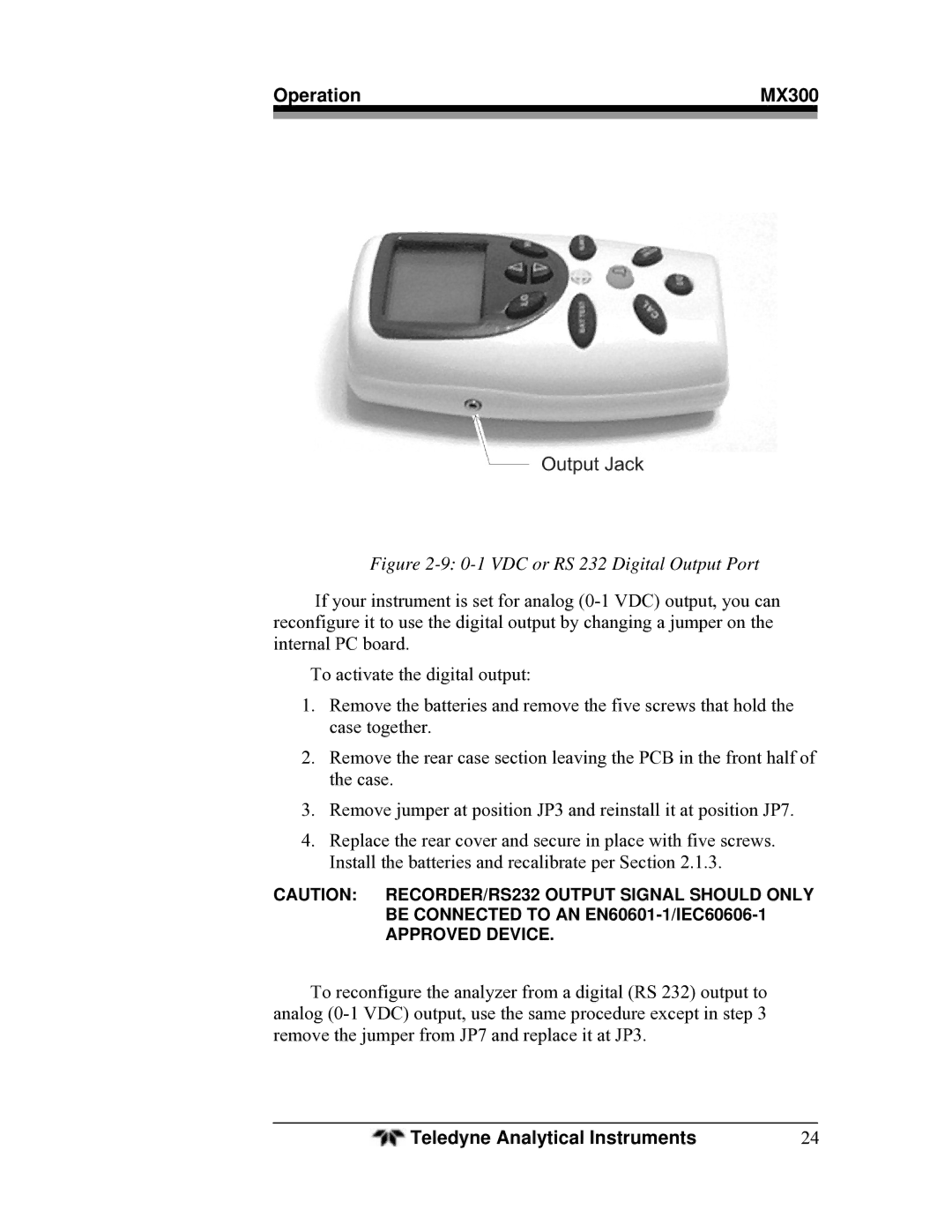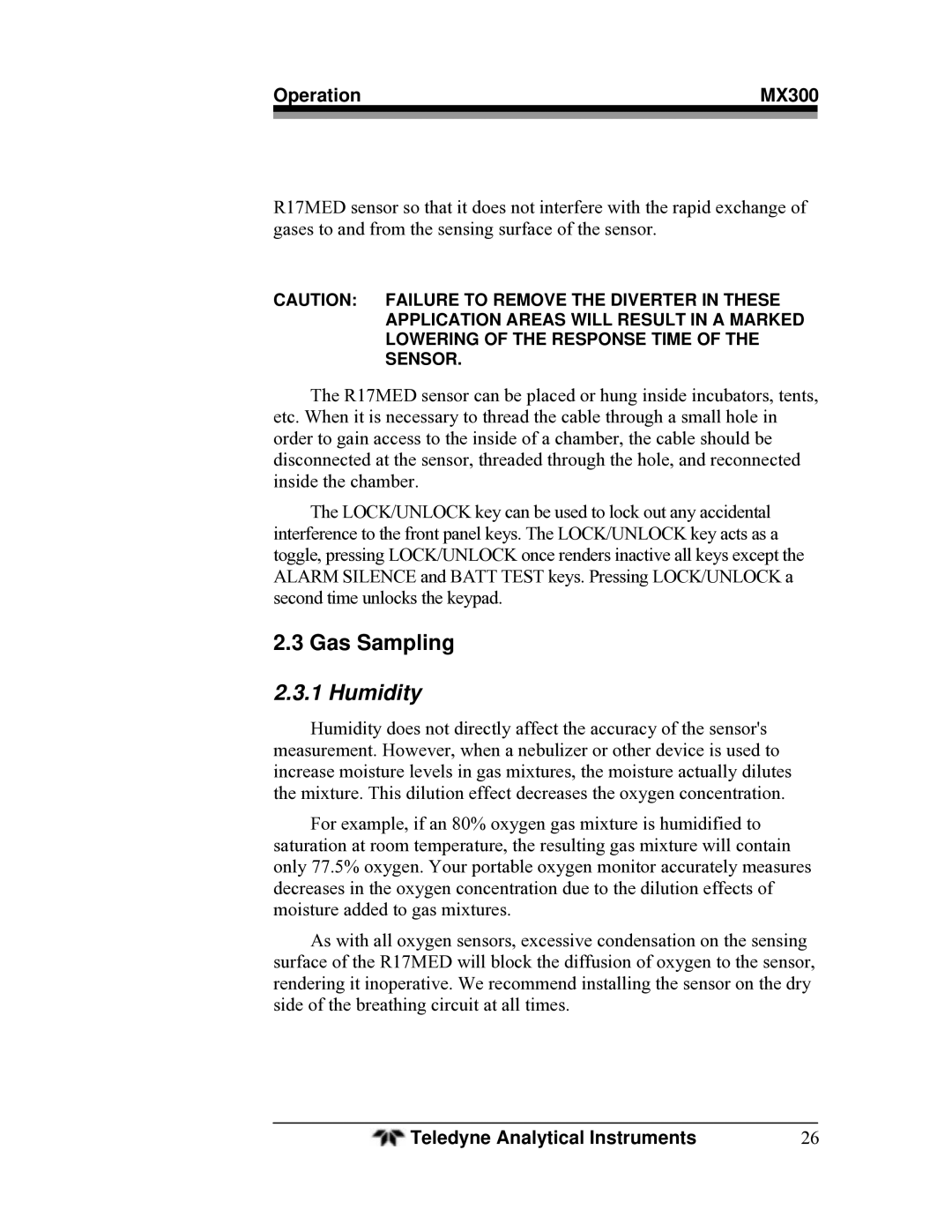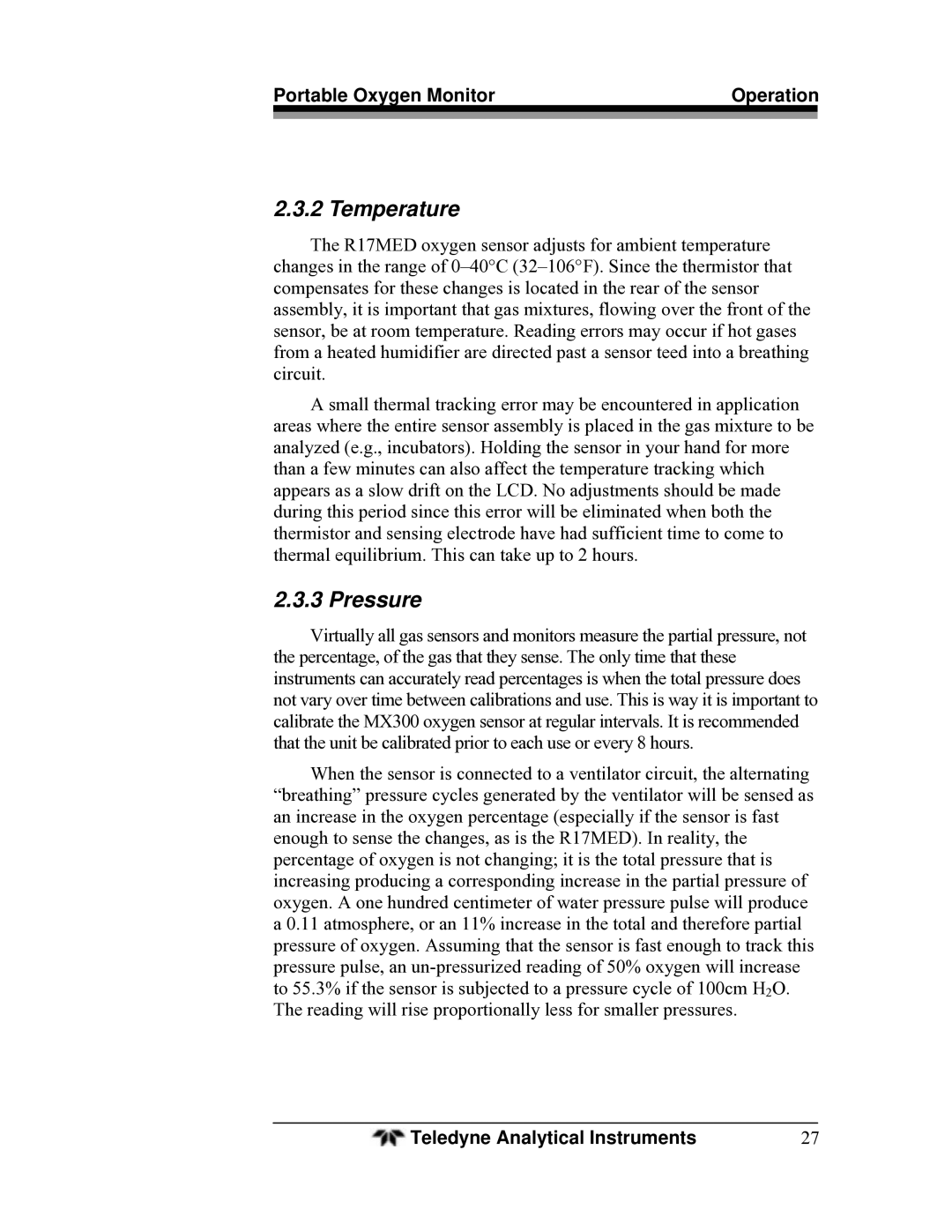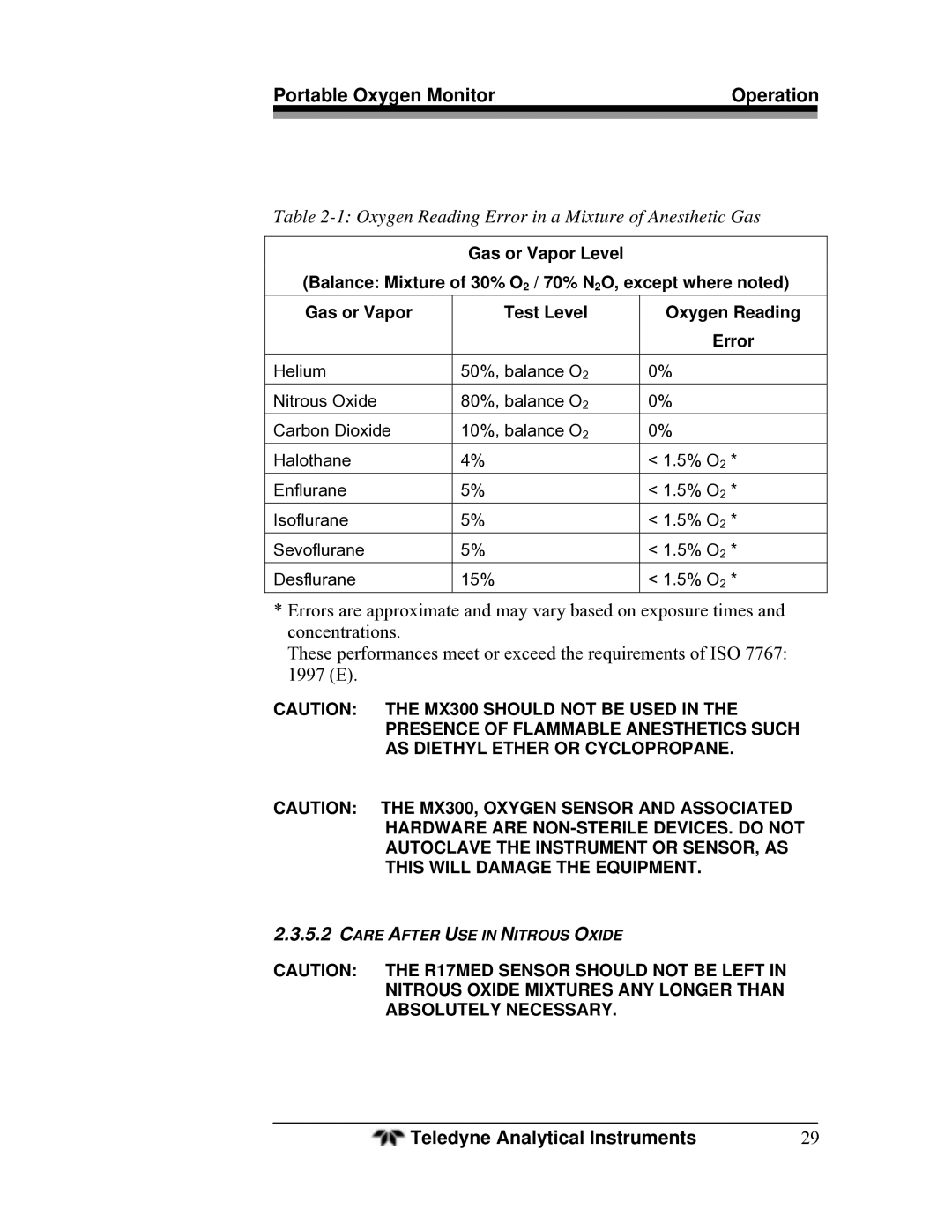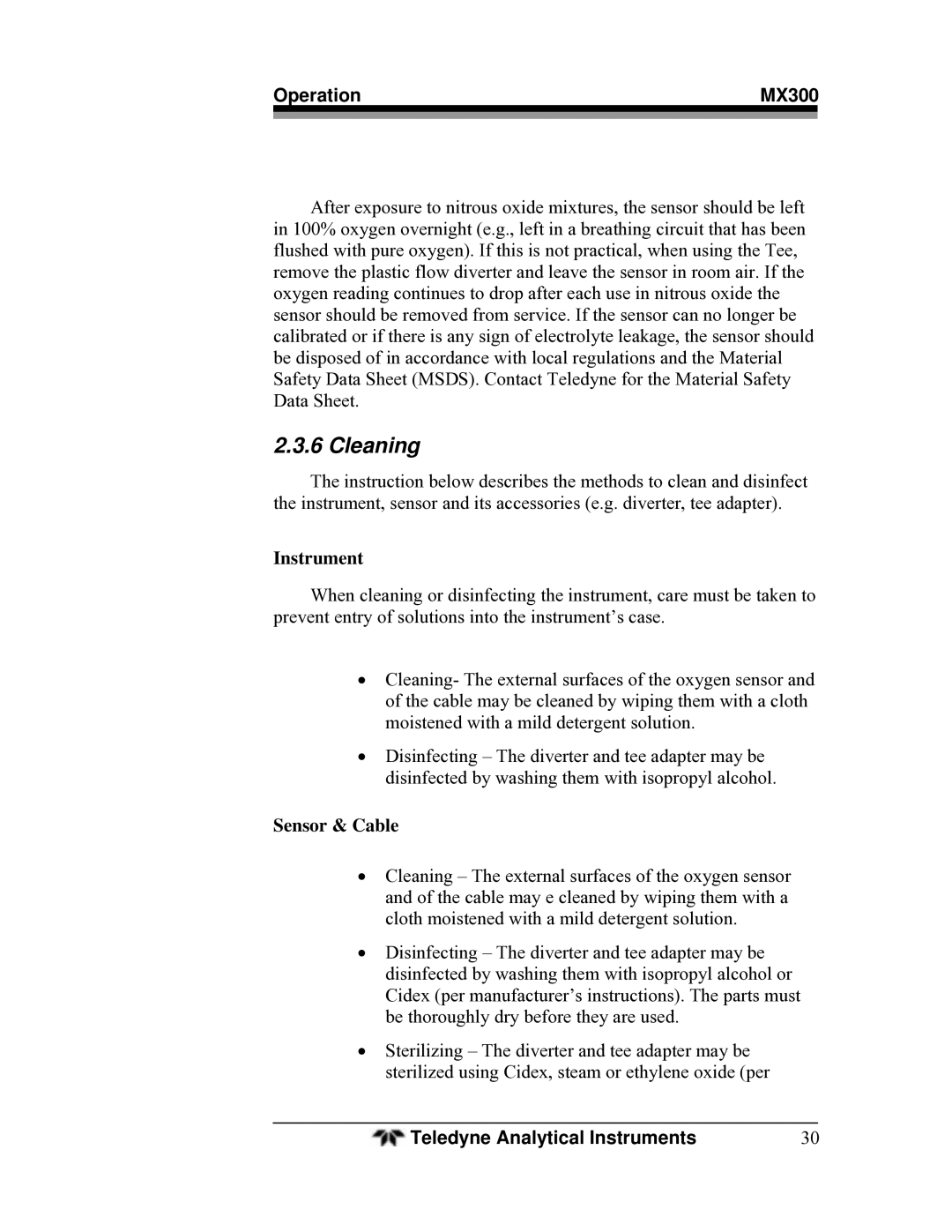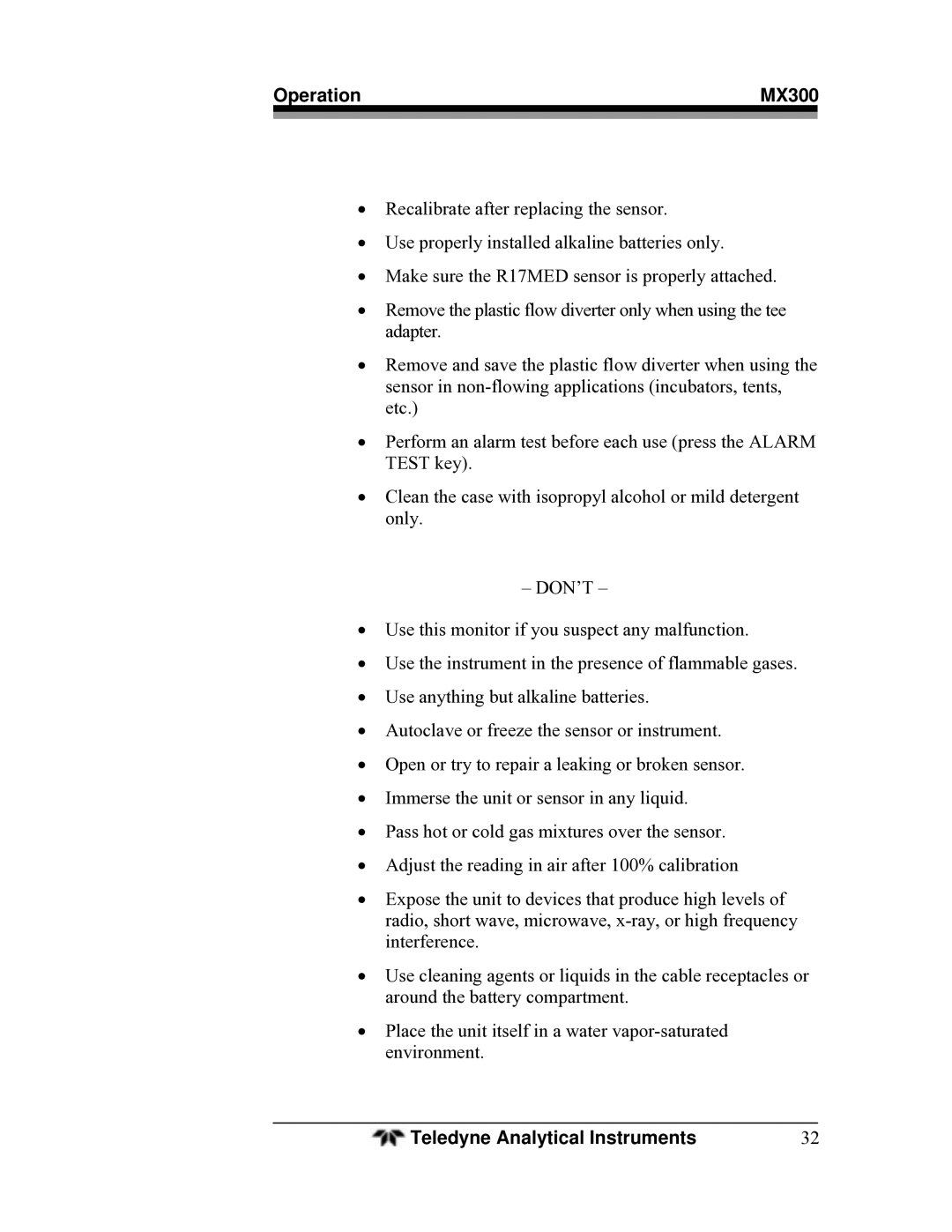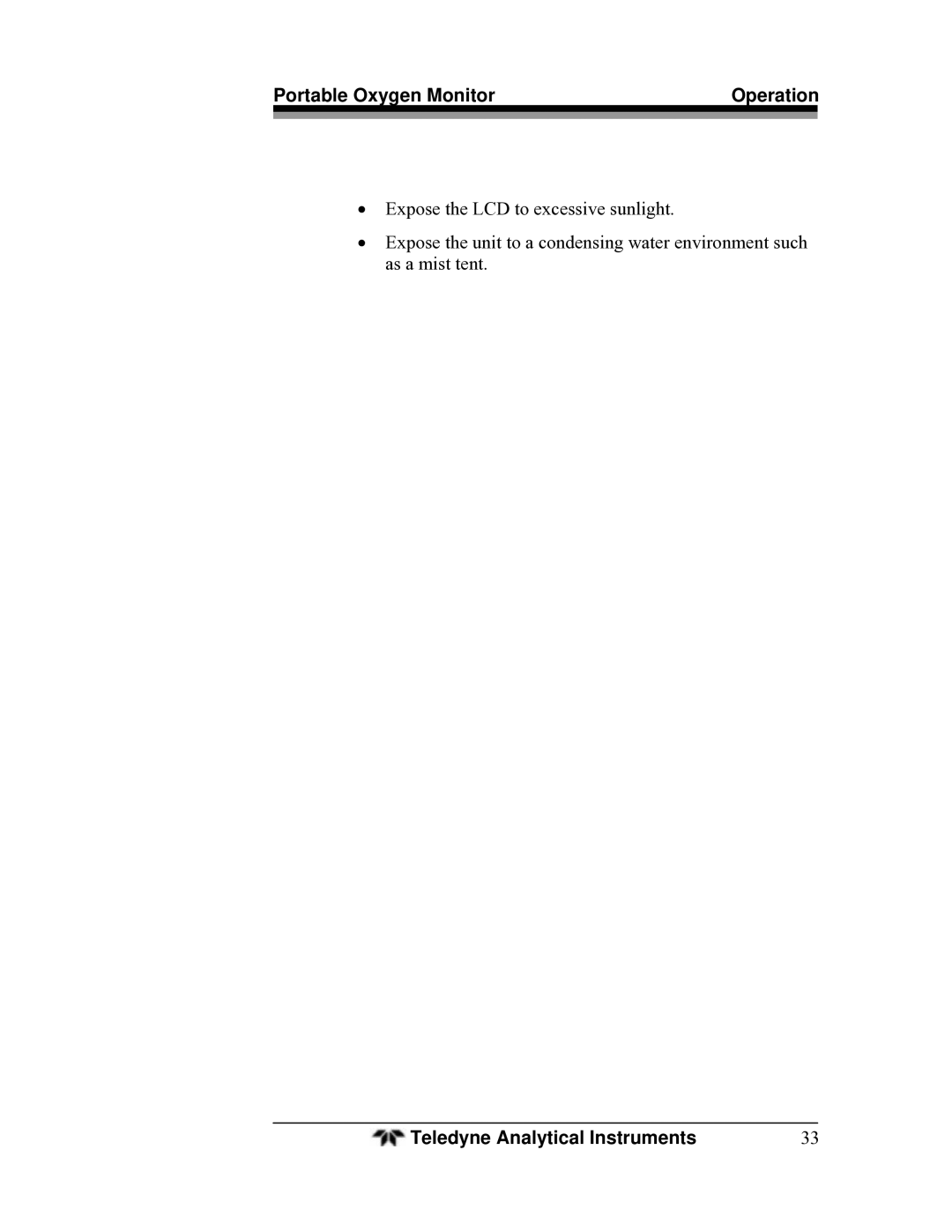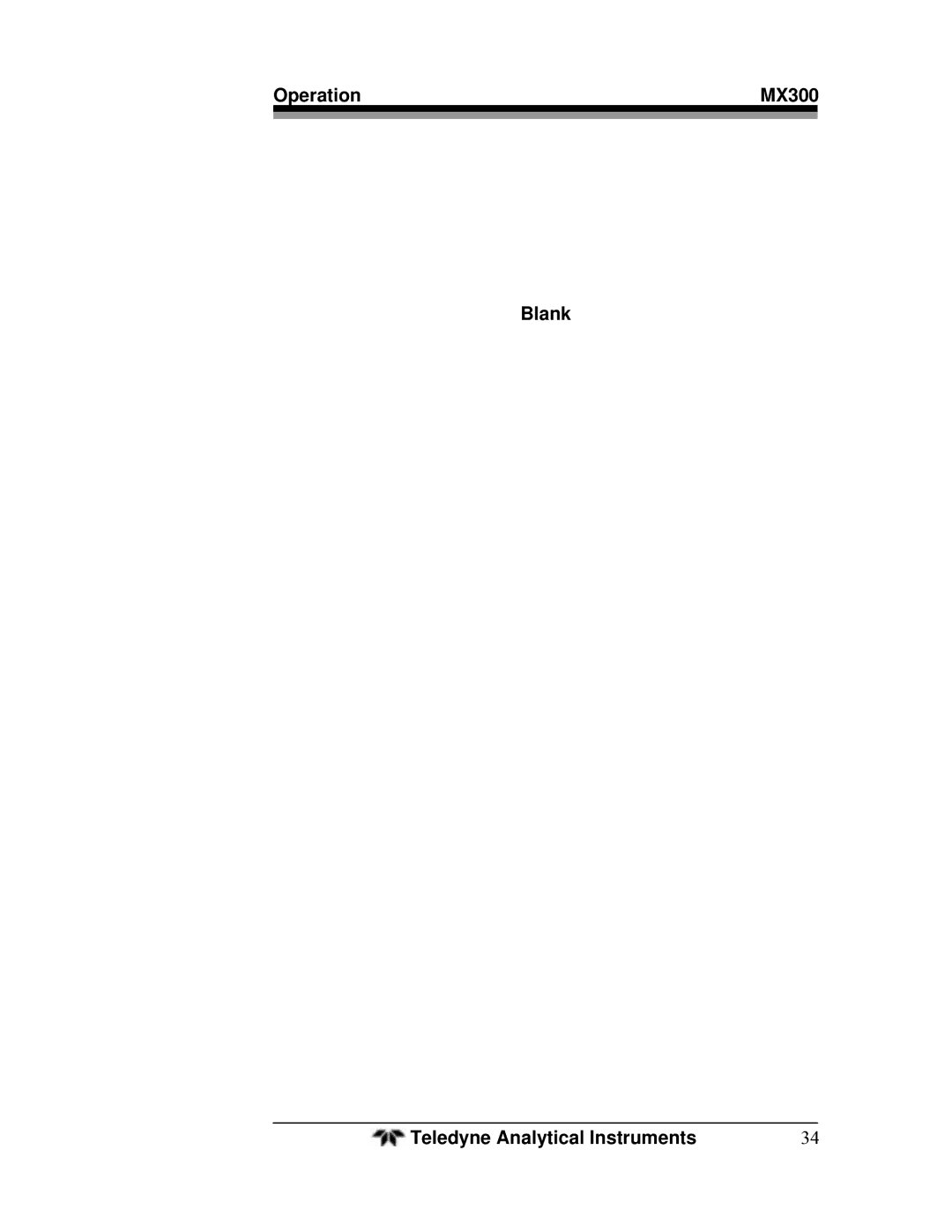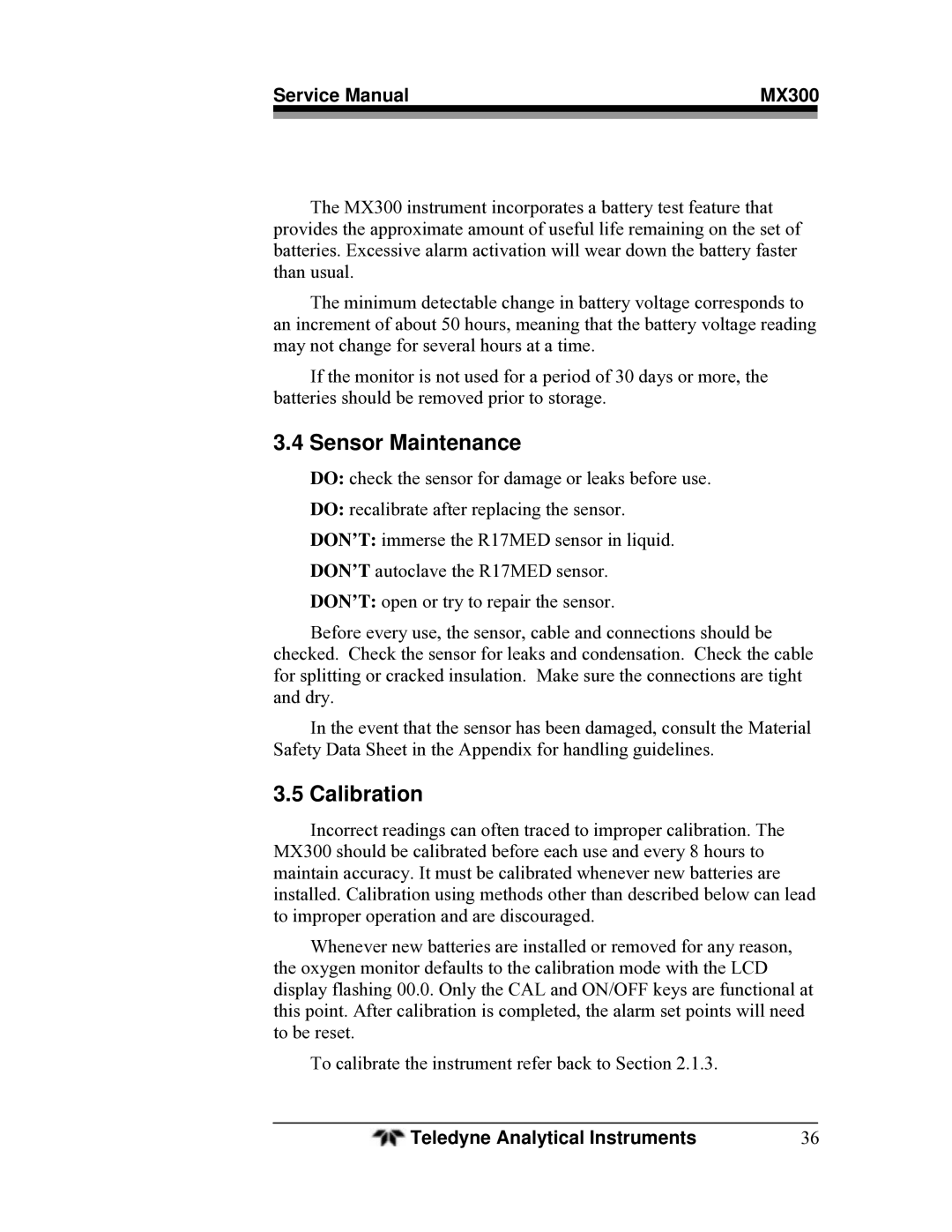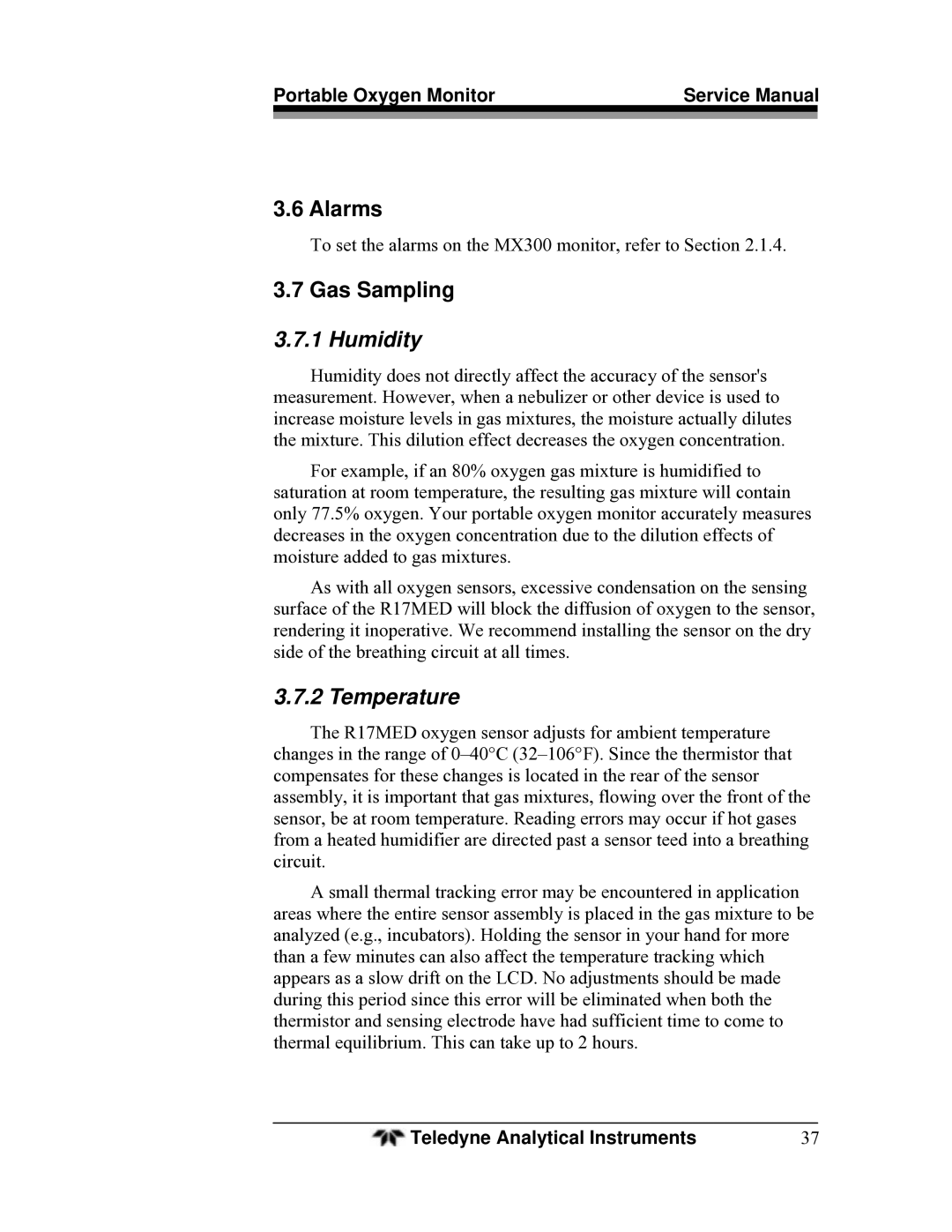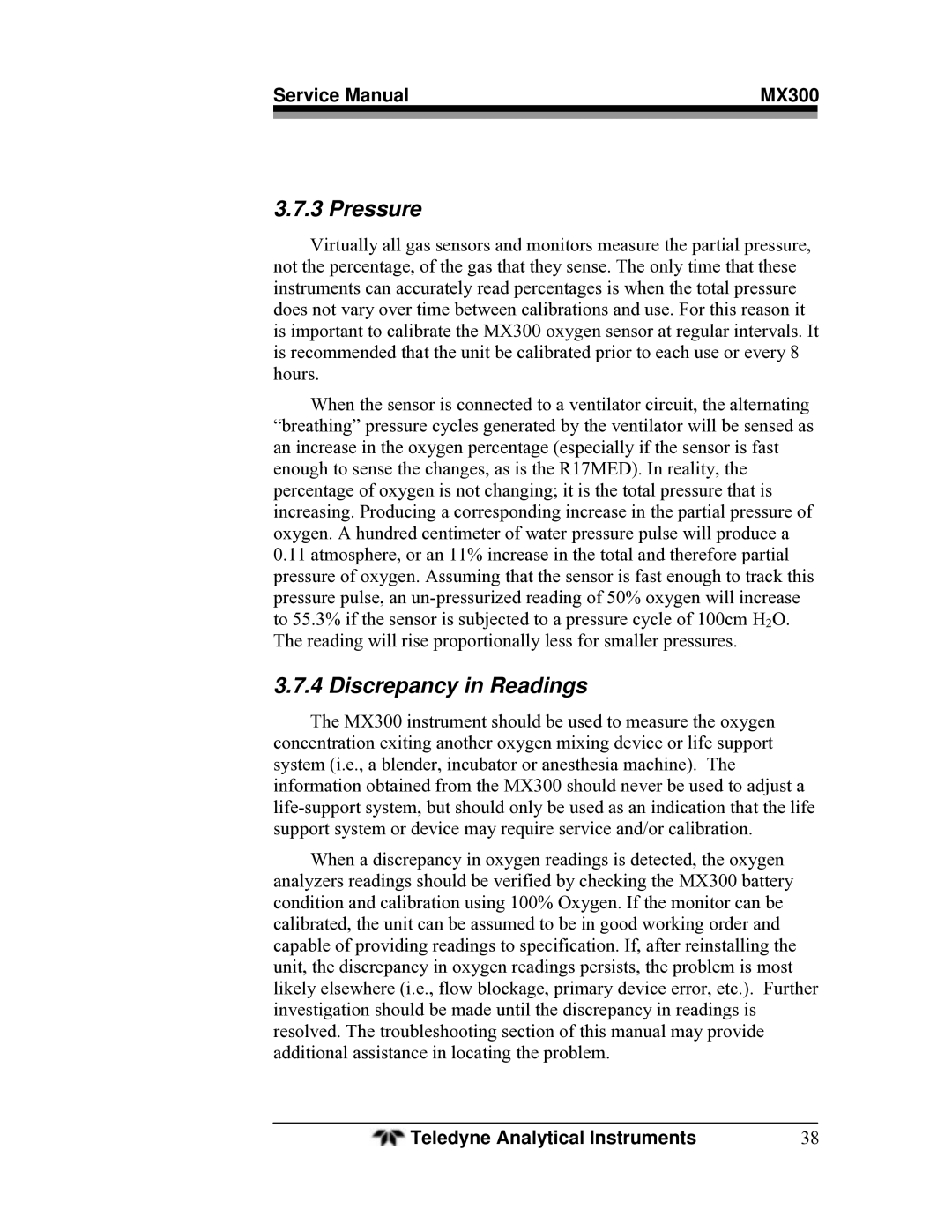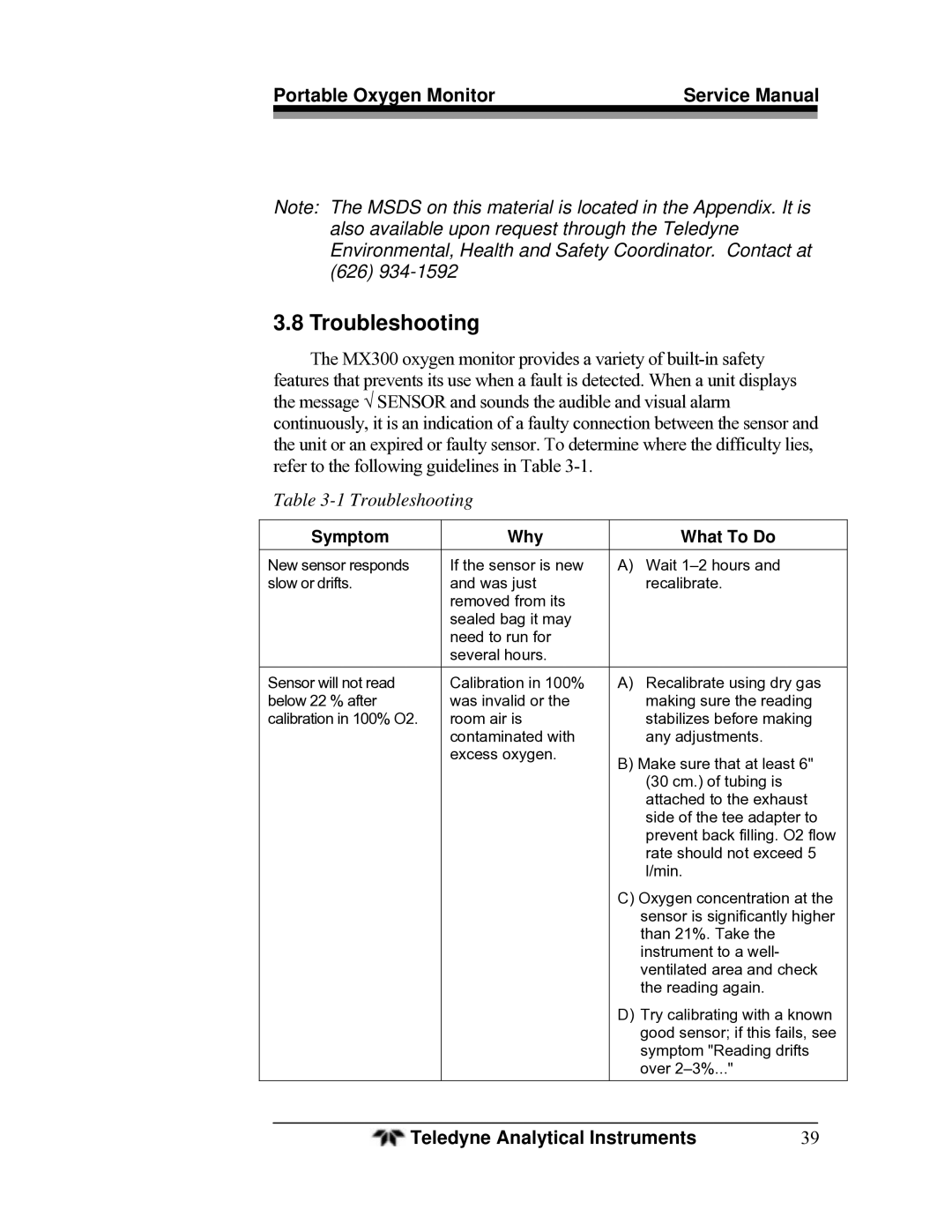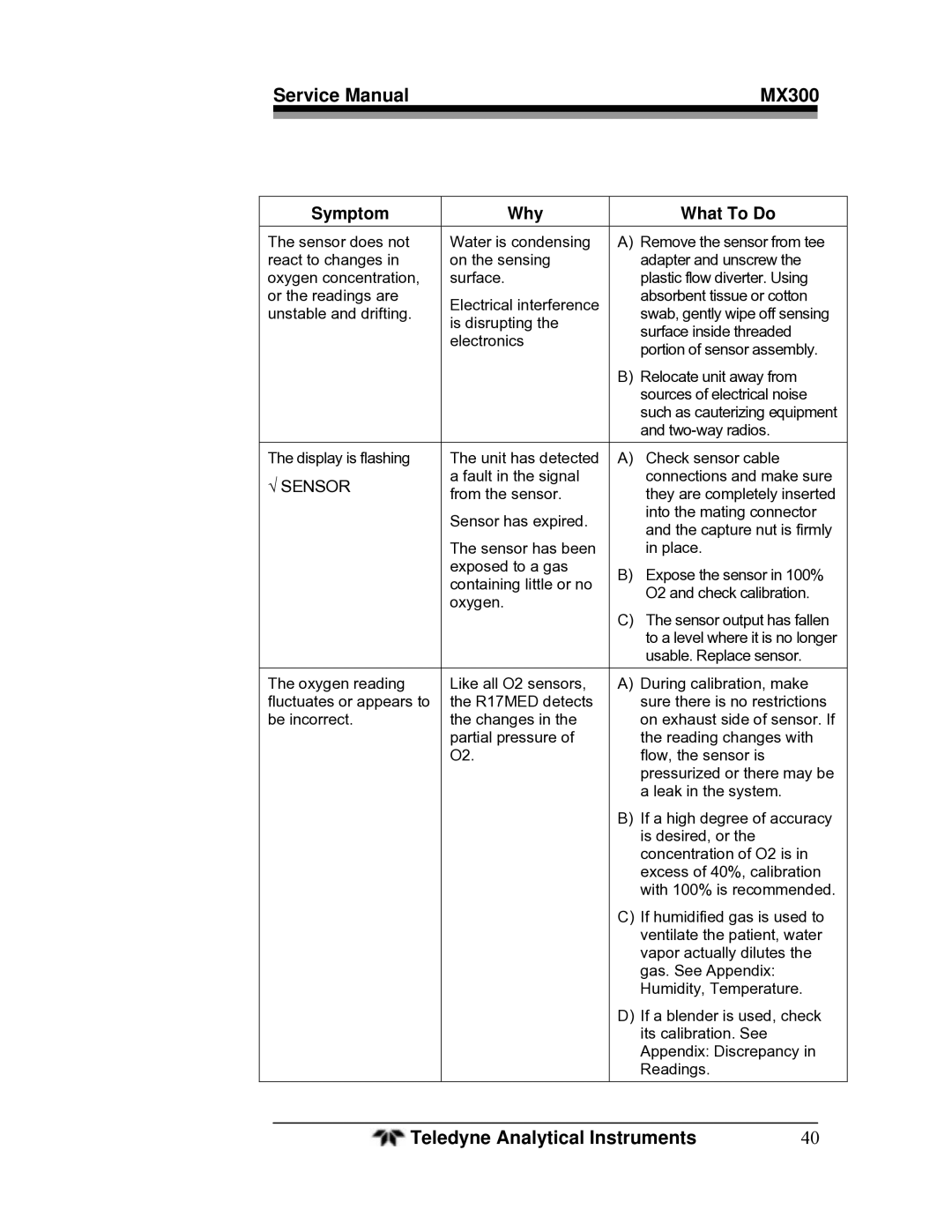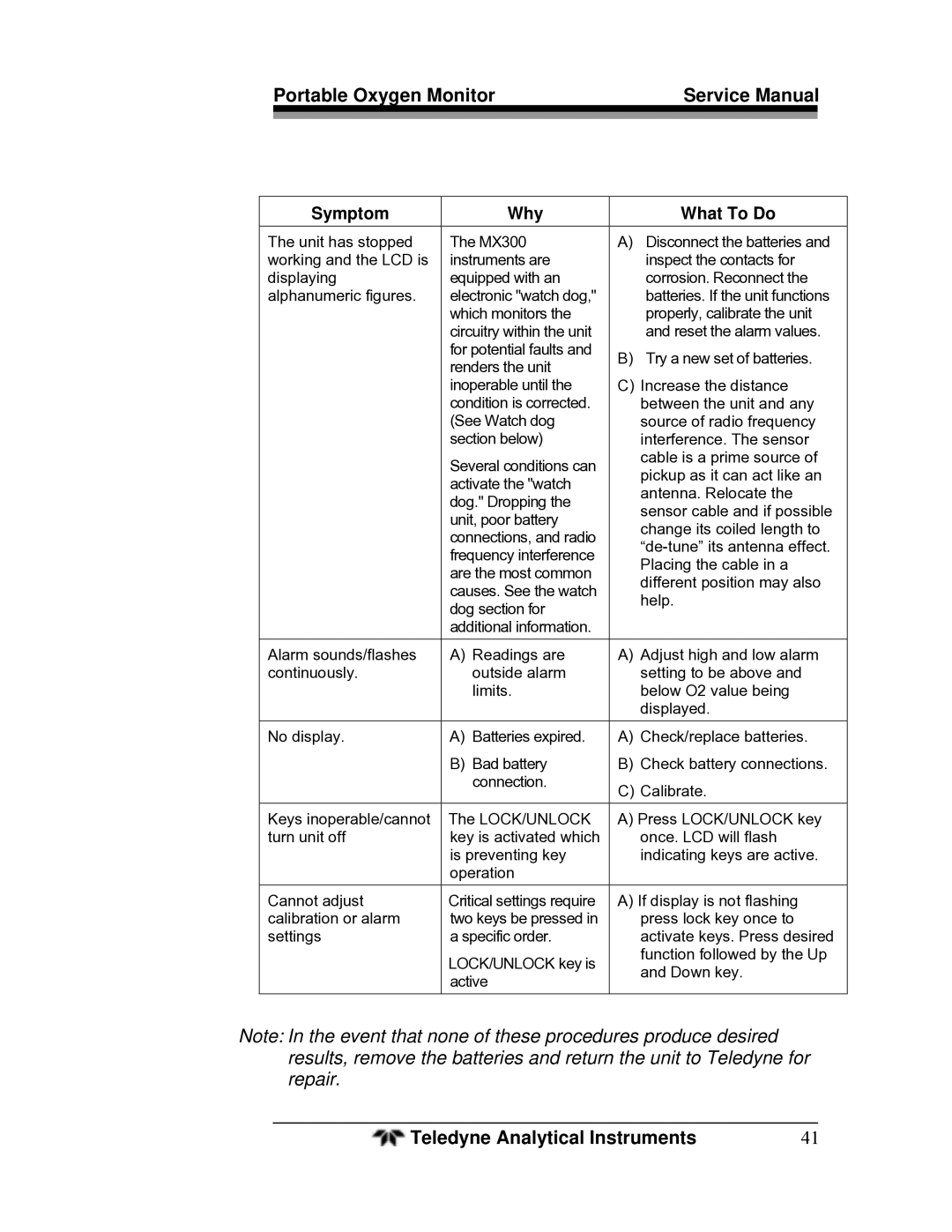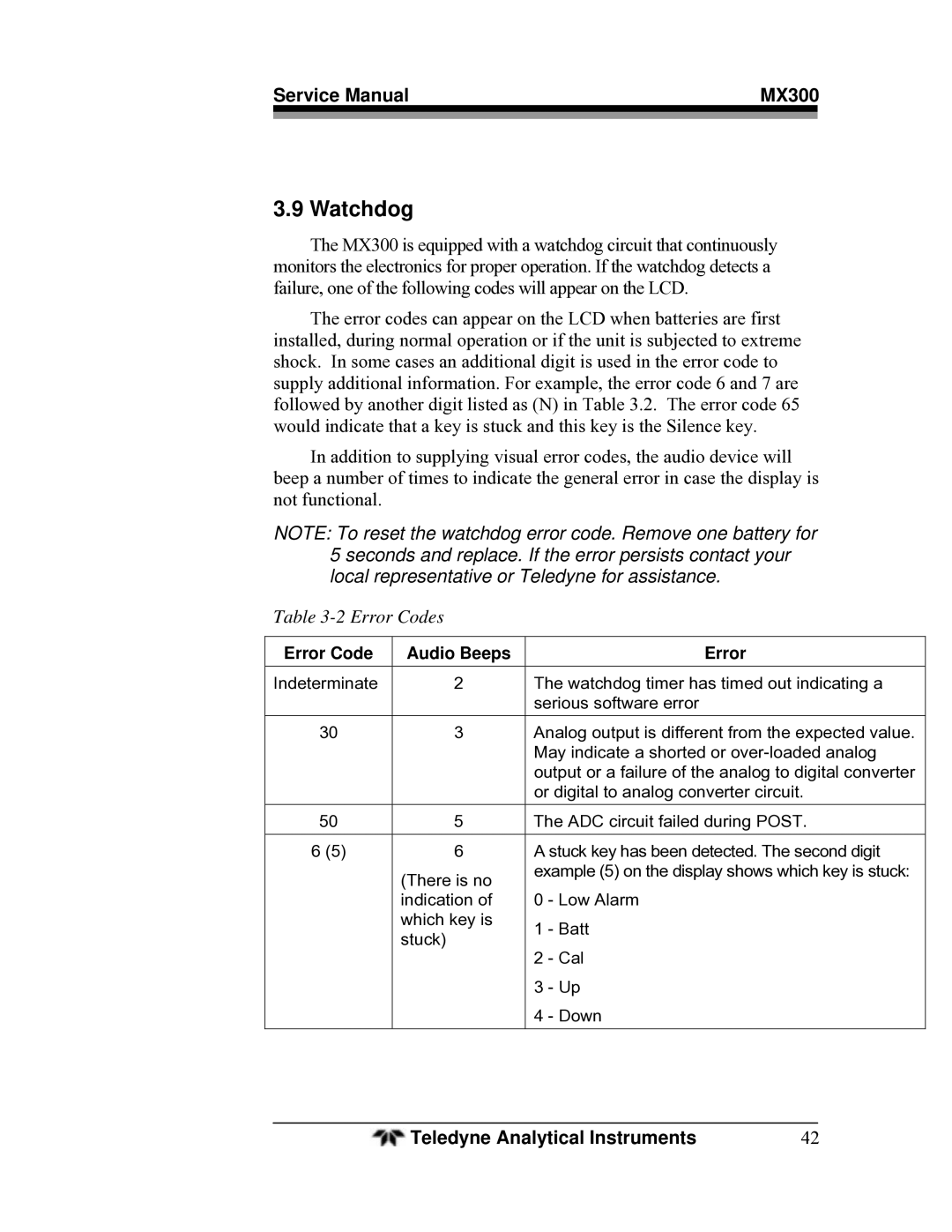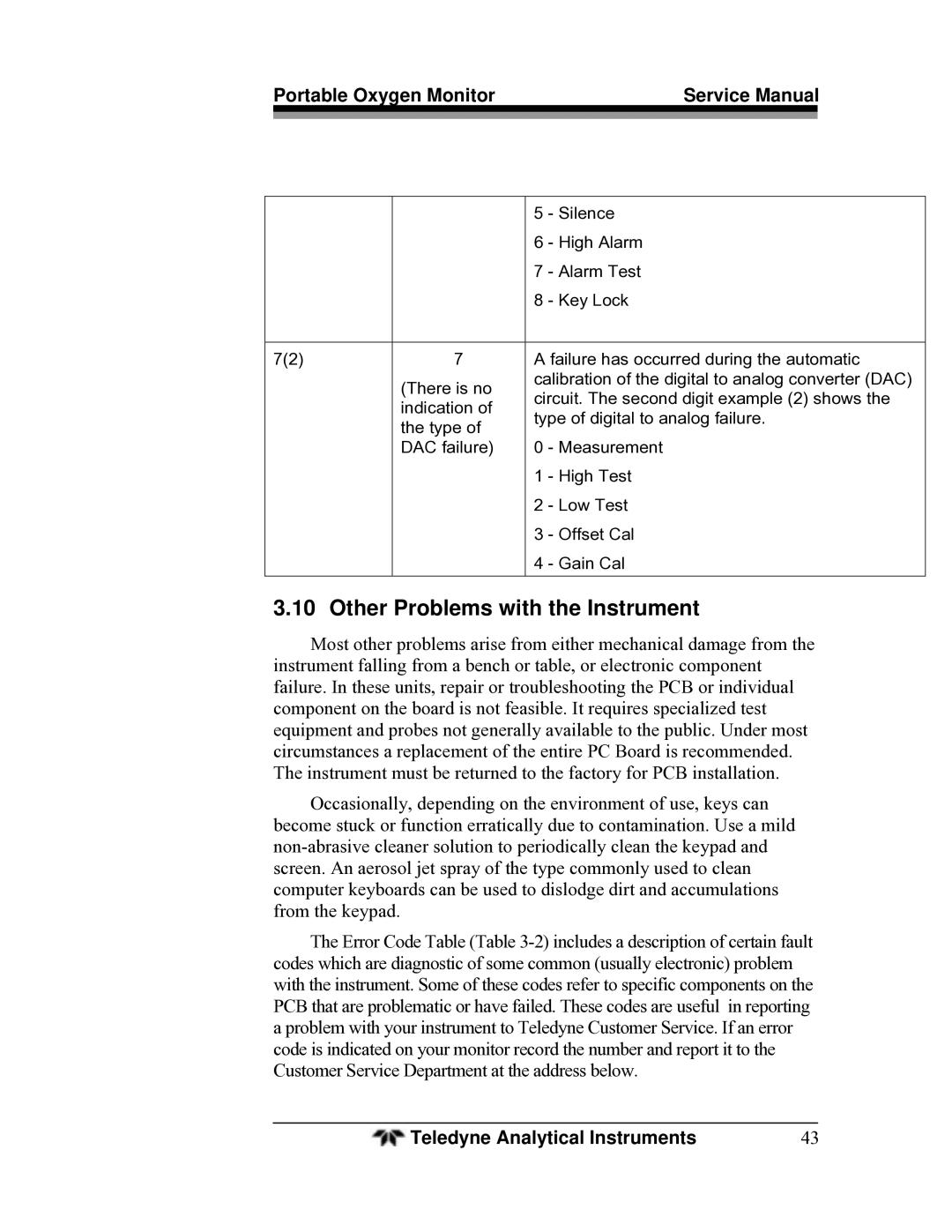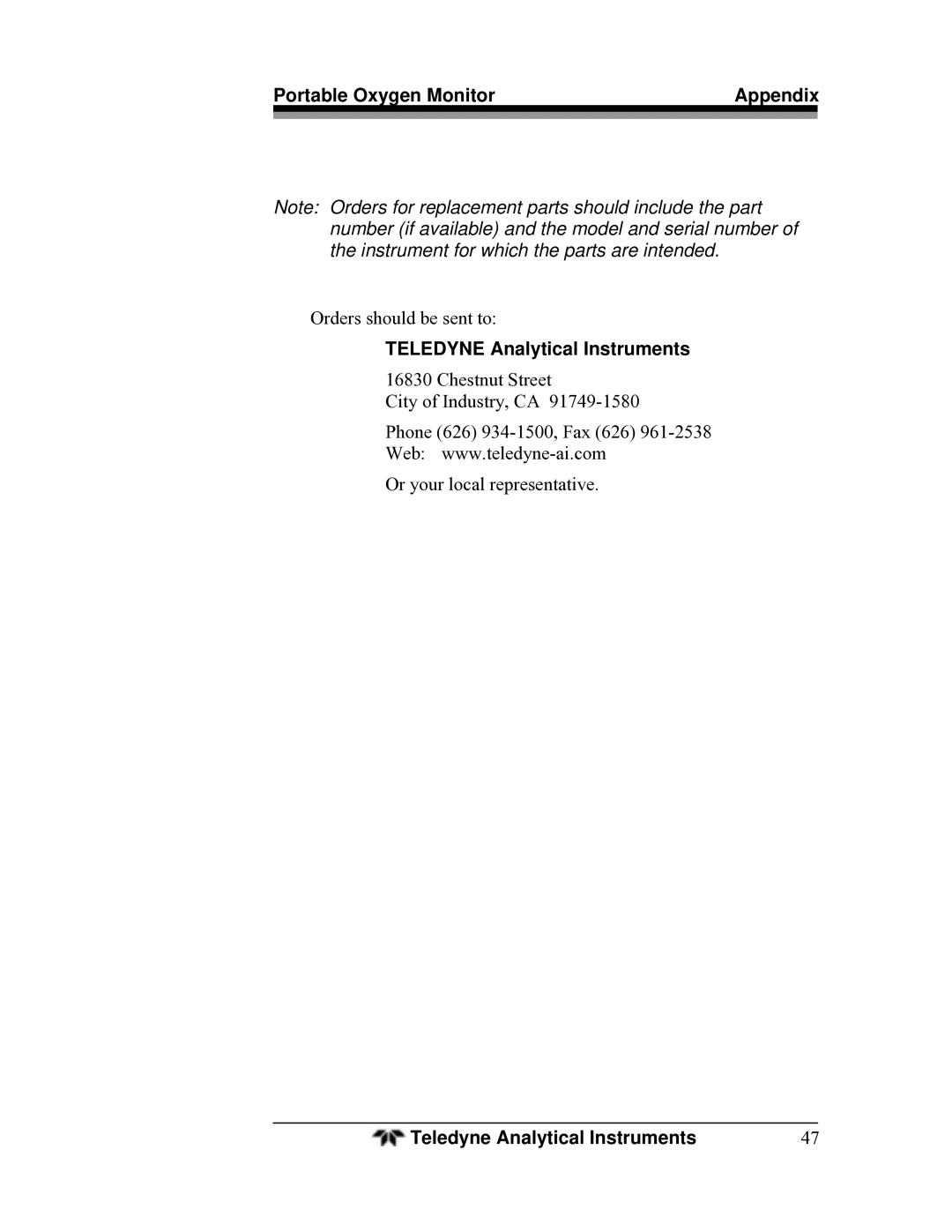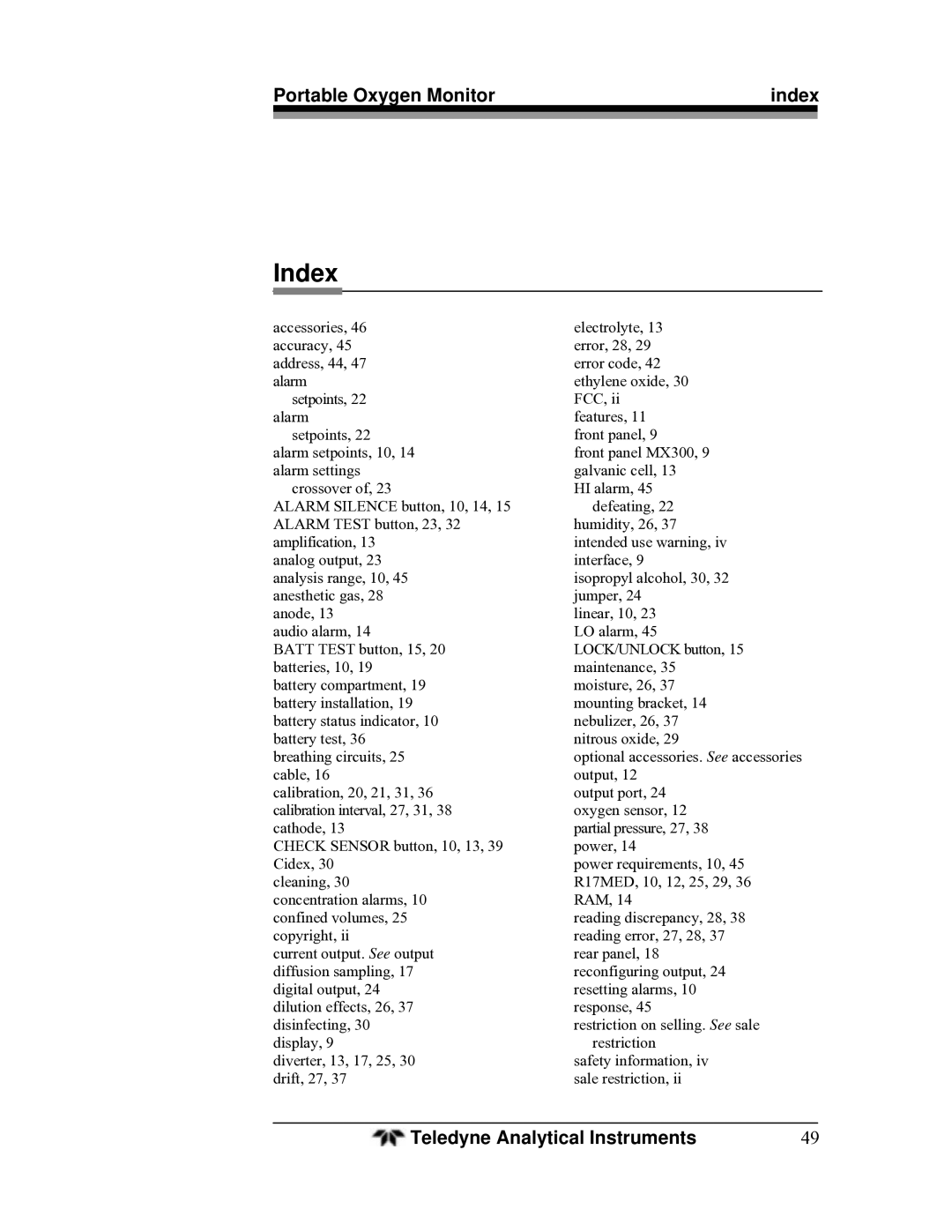Portable Oxygen Monitor | Operation | |
|
|
|
manufacturer’s instructions). Due to the varying conditions imposed on the materials during sterilization it is not possible to determine the exact number of times the sterilization processes can be carried out. Therefore, Teledyne recommends that the operators carefully examine the diverter and tee adapter after sterilization and prior to use to verify that the item is fit for use. The operator should verify that there are no cracks and tears and the item does not show any indication of material changes or physical damage that may compromise its effective use. Both diverter and tee adapter should be free of any chemical residue attributable to the sterilization process.
Because of the variability of the cleaning, disinfecting and sterilizing processes, Teledyne cannot provide specific sterilization instructions nor can the sterility of the item be ensured. Therefore, we highly recommend referring to the manufacturer’s instructions on the details of method.
2.4 Do’s and Don’ts
– DO –
•Read all of the directions before using for the first time.
•Calibrate every 8 hours or before every use.
•Visually inspect the sensor for leakage before each use.
•Calibrate using 100% oxygen and check in air.
•Check the HI and LO alarm settings prior to each use.
•Test batteries regularly and replace when battery indicator shows low battery (no bars remaining)
•Make sure keys are locked by using the LOCK/UNLOCK key feature.
•Keep the unit, sensor and connections dry, or on the dry side of the breathing circuit.
•Recalibrate after replacing the batteries.
Teledyne Analytical Instruments | 31 |
